In late 2013 I discovered Dahlias. As unbelievable as that might sound to gardeners who have grown up with them for decades, somehow I’d missed them throughout my life. I don’t think I’d even simply ‘not recognised them’, I’m fairly sure I had avoided them almost completely – perhaps a sign of how out of fashion they had become?

My first introduction to Dahlias was a slot on Gardener’s World presented by Rachel de Thame. Then on the programme British Gardens in Time highlighting the Dahlia walk at Biddulph Grange. I was captivated and in summer 2014 we visited Biddulph. As my interest in Dahlias grew I wanted to know more for our planned 2015 garden, so I visited RHS Wisley to see the annual Dahlia show, and that was that.
At the show I discovered the National Dahlia Collection and Hall’s Of Heddon, two of the UK’s best respected dahlia suppliers. For months I researched, planned and lusted over hundreds of varieties, choosing the ones I wanted to squeeze into our garden. I bought all of our Dahlias as rooted cuttings from these two suppliers (excellent service and quality).
On a second trip to RHS Wisley, I found the Dahlia trial bed where ‘Emory Paul’ stole the show for me. My favourite Dahlia of all, seen in the main picture at the top of this page (I will gush about this one more below).
Dahlia cultivars we grew in 2015
- Dahlia ‘Bishop of Canterbury’ (1 plant)
- Dahlia ‘Black Jack’ (2 plants)
- Dahlia ‘Black Monarch’ (1 plant)
- Dahlia ‘Blackberry Ripple’ (1 plant)
- Dahlia ‘Chee’ (1 plant)
- Dahlia ‘Emory Paul’ (2 plants)
- Dahlia ‘Fidalgo Blacky’ (1 plant)
- Dahlia ‘Gallery Art Fair’ (3 plants)
- Dahlia ‘Gallery Art Nouveau’ (3 plants)
- Dahlia ‘Hillcrest Royal’ (2 plants)
- Dahlia ‘Kenora Macop B’ (1 plant)
- Dahlia ‘Purpinka’ (3 plants)
Why Dahlias?
It’s the flowers of course, almost unique in the perfect, plastic look and form. They are (as I know now) very easy to grow and they flower for ages at the end of the summer once all of the Tulips and Alliums are a distant memory.
I loved growing every Dahlia, each arriving as perfect little rooted cuttings through the post 🙂 The way they grow at each stage is so interesting and so full of energy. Their foliage particularly nice in the early stages, then the flowers take over.
The flowers remind me a bit of my first plant love, Cacti. The flowers are so perfect like those on a cactus, especially as they open. Dahlia flowers are possibly at their most attractive as the bud first opens and the finely cut, pointy, unnatural looking petals emerge.
Importance of choosing the right Dahlia colours

It’s the rich coloured Dahlia varieties that do it for me (think Sarah Raven). I know Dahlias in the 90s and 00s grew out of fashion. I believe this wasn’t the plant’s fault, it’s people’s choice of colours that caused it. You can still see this hanging on at the Dahlia shows. I love them all, of course, and the plants are grown to perfection, it’s the colours that feel a little dated. I’m a self-trained designer (for business stuff) and part-time artist, and paste l Dahlias mixed with creams, apricots, yellows and bright reds do not a nice palette make.
l Dahlias mixed with creams, apricots, yellows and bright reds do not a nice palette make.
But who am I to judge colour. I’m drawn to neon fuchsia pink! I always have been. I have to stop myself only using that colour. For Dahlias (and most flowers in the garden), I restricted our colours to the range of neon-pink, toned down by carmine red and black.
Dahlias in pots vs borders – how did they perform?
The Dahlias were all grown on in 3 litre pots of compost, then mostly grown in large terracotta pots with a diameter of 14″, using normal multipurpose compost with additional slow release fertiliser. I lined the pots with the compost bags to help with moisture retention and to stop algae on the pots.
Others were grown in the main raised flower border, and the smaller cultivars in smaller pots and window boxes.
My advice? While possible, it’s generally best not to grow large, giant or dinner plate varieties in pots. If you can only grow it in pots though, don’t be put off, because it works, it’s just more effort. Read on Dahlia lovers!
I will try one giant in a pot again but not lots of them, because although they grew happily, they didn’t grow perfectly and the effort wasn’t worth it. I was advised against it by the pros but wanted to give it a go to complete our own Dahlia walk and out of pure curiosity to understand the Dahlia plant fully.
I’m glad I did because I can say first hand that growing giants in pots is definitely possible, ‘Emory Paul’ grew fine and flowered, the flowers were just smaller and poorer in colour (not enough fertiliser), and ‘Black Jack’ grew exactly as the border grown plant, it was the staking that became the issue.
The size of the pot was fine (minimum of 12″ x 12″) and watering was completely manageable. The issues were:
- Lack of nutrients from late-summer so flowering was slower for the big plants making liquid feeds essential, the quantity of which I find hard to judge for large pots.
- Staking. They grew so tall and floppy, the staking became quite impractical. So very large to giant plants are a no-no simply due to the effort, everything from medium down is fine, ‘Hillcrest Royal’ would work.
Aside from the giants, there were lots of container successes. The medium sized Dahlias faired much, much better. In fact, ‘Blackberry Ripple’ was the star of the whole show (literally!) That and the smaller ‘Fidalgo Blacky’ flowered from early July until early December. ‘Black Jack’, a giant, was an exception and did actually perform as well in the pot as in the bed, in fact, slightly better.
The small Dahlias, ‘Gallery Art Fair’ performed really well in small window boxes. Flowering constantly. As did the miniature ‘Purpinkas’.
Almost all of the Dahlias in the border were fantastic, especially ‘Emory Paul’. Albeit a cultivar that is slow to get going – but that’s part of the point – what a finale to the summer’s flowering! Once ‘Hillcrest Royal’ got going there was no stopping it, expanding and flowering in an ever increasing bright pink dome. ‘Gallery Art Nouveau’ flowered profusely in the border too.
Staking
All of the Dahlias did end up needing staking, except for the small and dwarf ones. Not knowing what to do, I ended up in a bit of a stake, bamboo and string tangle. I made lots of mistakes I wouldn’t repeat. Next year, stakes go in on planting, much deeper and securer than I had them as the plants are heavy. Then thinner bamboo canes for individual giant blooms. Hiding that structure in a border I’ll need to work on as I don’t want to see any stakes. The Gallery series Dahlias didn’t really need any staking.
Dahlia disasters

I made loads of mistakes – which is fine, I love making mistakes 😀 It’s how we learn. These were my biggest hoo-has and problems faced:
- One of the ‘Gallery Art Nouveau’ developed virus signs, so I binned it (see pic).
- Initially for whatever reason, ‘Chee’ konked it after a month or two of weak growth.
- ‘Black Monarch’ grew sickly, so I removed it too.
- I wasn’t prepared for how MASSIVE Dahlias can get in just a few months. So I well and truly crashed and burned on staking, making a mess and far more work for myself.
- ‘Bishop of Canterbury’ didn’t flower at all. I don’t know why – it might be because it needs a year to get going, or simply that it didn’t receive enough light.
- The bigger plants in pots didn’t have enough fertiliser towards the end of summer and I found it hard to judge the correct amount.
- I stopped lots of the Dahlias in early summer to delay flowering and try to make them shorter, thinking I was being clever. Turns out this was unnecessary as they keep on flowering and flowering anyway, and they grew to the same height regardless. As a result we didn’t have quite as many flowers as we should have done (with many not flowering in time for Monty 🙁 doh!)
Full findings by Dahlia cultivar
Dahlia ‘Bishop of Canterbury’

This has by far the nicest foliage of all the Dahlias we grew in 2015. Dark purpley bronze, and cut perfectly with lots of shape. Which is just as well because ours didn’t flower.
Dahlia ‘Black Jack’
I grew two of Dahlia ‘Black Jack’, one in a large pot and one in the bed. They both performed in exactly the same way, the one in a pot slightly better, flowering earlier (probably had better light). ‘Black Jack’ has some really nice, slightly bronzey foliage with some of the nicest shape. It’s a great looking plant. In both cases, it grew strongly until at 6ft, as it starts flowering, it just couldn’t support itself and flopped and snapped all over the place. Lesson: support flowers at the top of 5-6ft to stop this.
The flowers though, WOW, possibly the most beautiful. They open black with a hint of pink, turn to deep velvety black-red. Before turning redder. They are large but of a tasteful size that will work well for cut flowers.


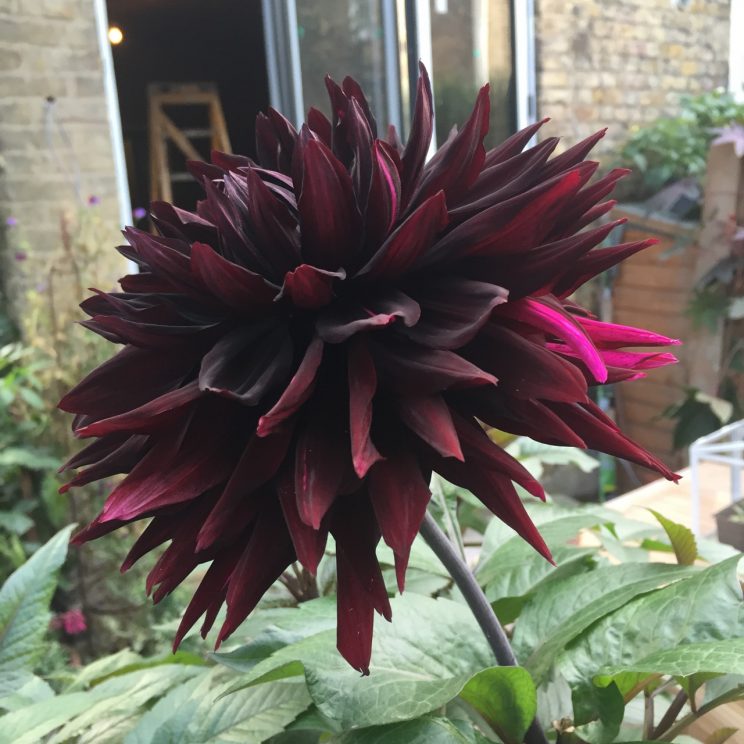



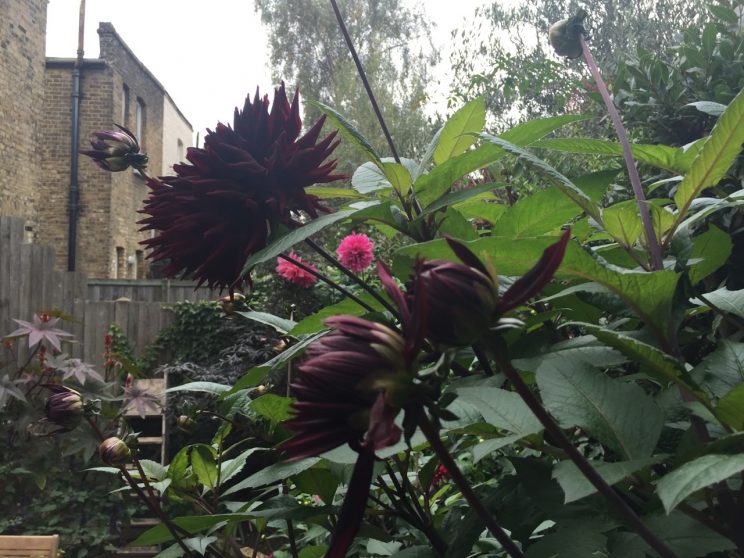
Dahlia ‘Black Monarch’
Ours died for unknown reasons – it just didn’t grow well from the start. Will try again next year as I have seen it at RHS Wisley and the flower is larger than ‘Black Jack’. Although for my money, ‘Black Jack’ is the blacker, more beautiful flower.
Dahlia ‘Blackberry Ripple’

Dahlia ‘Blackberry Ripple’ is supposed to have largely white flowers with blackberry streaks. Luckily, ours didn’t turn out like that, having the most beautiful and stunning flowers out of all of ours.
It was a real rocket. The fastest growing, the first to flower and the last to flower. This was our first Dahlia flower in the garden (spot the single lone streak of white giving away what it was supposed to look like):
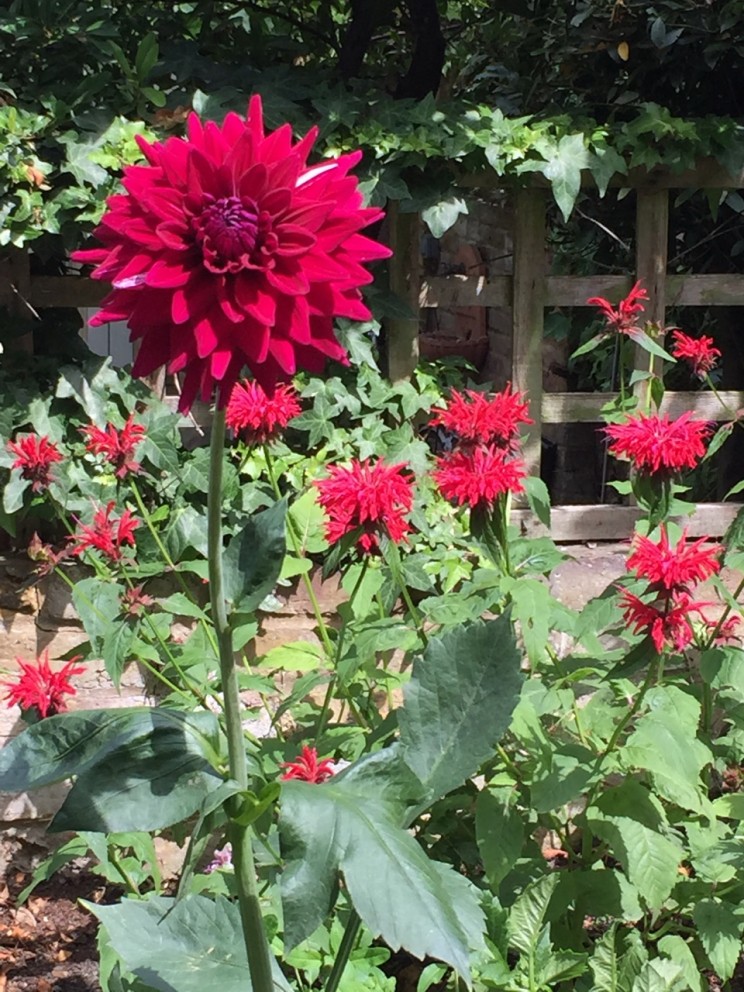

Dahlia ‘Chee’
This never grew sadly, it just sulked and eventually I got rid of it. The compost always felt too moist, even when I tried not to water it. I think its roots never really grew out of its plug. Will try this one again next year.
Dahlia ‘Emory Paul’
While ‘Blackberry Ripple’ has my favourite, rich dark-pink flowers in abundance, and ‘Black Jack’ has what I think are the most perfectly formed odd black flowers, it’s ‘Emory Paul’ that has stolen my heart.
It’s not just the size of the 12-14 inch flowers, nor the hundreds of giant petals packed in a shocking pink bundle. It’s not even the utter beauty of something so giant and disproportionate, that still maintains a perfectly formed round shape, opening symmetrically like a fountain. No, it’s all of this combined with the waviness and the touch of messiness of the petals that keeps it looking truly beautiful, and not just a gimmicky piece of plastic that other giant Dahlias can be guilty of.
‘Emory Paul’ is a slow burner. Growing and growing through the summer until in September giant tennis ball buds appear and linger. Finally creaking open in October as the garden’s final, grandest crescendo before the whole shebang comes tumbling down for winter. I wouldn’t have it any other way.
‘Emory Paul’ is a show stopping treat that any gardener can grow. I’ll always remember that feeling of disbelief that something so ridiculous was growing in our garden. I probably experienced a little of the Victorian excitement and pride they will have had growing the giant waterlily Victoria amazonica. Except they would have laughed at how much easier the Dahlia is to grow…

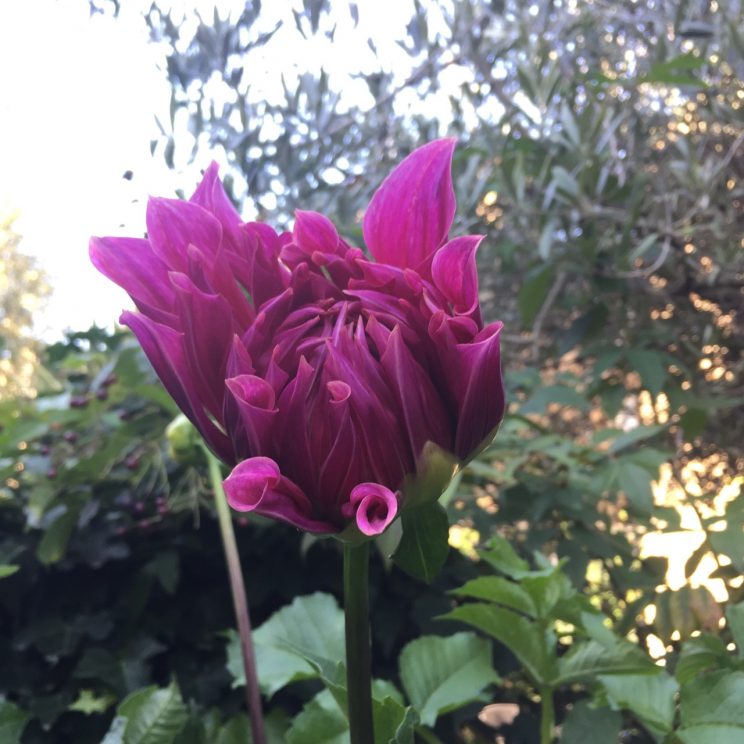








‘Emory Paul’ is lots of fun and I’ll always grow it.
Dahlia ‘Fidalgo Blacky’
Dahlia ‘Fidalgo Blacky’ is a little flower-powerhouse. It was the second to start flowering in July and didn’t stop until December. Its colouring is quite like ‘Black Jack’. It opens black with interesting lines of neon pink on the finely cut petals, then opens to a dark red. It never really stays black.
I’ve included each stage of flowering colour below in order:


Dahlia ‘Gallery Art Fair’

These were bought for the ‘white garden’ I had planned for the front of the house. I say planned, it existed for two days, then we needed the space to hold rubble from our building work. So they were brought into the neon jungle at the back. I would definitely recommend Dahlia ‘Gallery Art Fair’, they are the best cultivars I’ve seen of small Dahlias with large white flowers. They flowered non-stop for months. As with many Dahlias, I like them best as they first open with the sharper, pointy petals that later become blowsier:

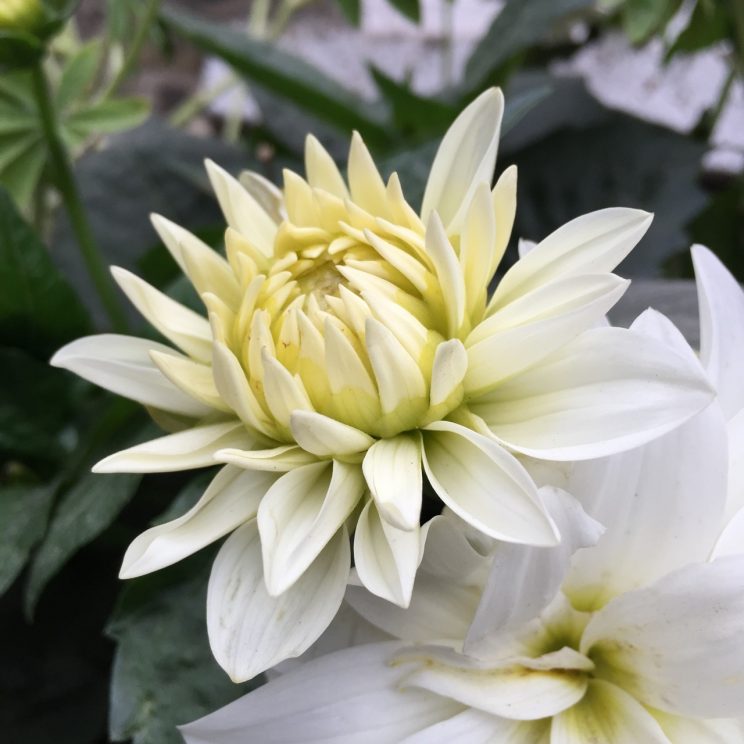
Dahlia ‘Gallery Art Nouveau’
Dahlia ‘Gallery Art Nouveau’ had the lightest of the pink flowers. They aren’t quite as vivid a colour as I would like but you can’t have it all. As mentioned above, one of the plants was unlucky enough to come with a virus so I binned it, but the other two grew really well, flowering for ages with large flowers for the plant’s overall small size.

Dahlia ‘Hillcrest Royal’
Every single book, magazine and TV show will always mention ‘Hillcrest Royal’ when mentioning Dahlias. I can now see why. I grew two plants in the border next to each other. They took a while to get going but when they did, it was like a gushing fountain of glowing pink. Classified as a ‘cactus’ shape flower because of its spiney petals, I think it looks more like some strange cross between an octopus and a rubber ‘marigold’ glove. The photos don’t do the colour justice, they have an otherworldly glow of red, pink and blue about them. Shining in the gloom of autumn like bulbs.
Fantastic plants which I’ll definitely grow again, but they are also the most rampant. The two plants eventually formed a giant 3 x 3 m dome of tangled stems, making them completely impossible to stake and smothering everything else around them. I’ll fix this next year by only growing one in the border, the other in a pot, and using a ready made frame to enclose the growth into a tall column.



Dahlia ‘Kenora Macop B’
I wasn’t overly taken with Dahlia ‘Kenora Macop B’. It was one of the giants I grew in the pots. It actually grew very well, and the flowers were big and voluptuous. Personally, I didn’t think the shape of the plant itself was very attractive compared to the others – which in a small space matters. Also, they were much redder than I had expected. Really, I think these are for cut flower gardens only, not for ornamental borders. That said, the flowers were huge – the second to ‘Emory Paul’, although still half that size. There weren’t very many however, perhaps down to the pot and lack of fertiliser.
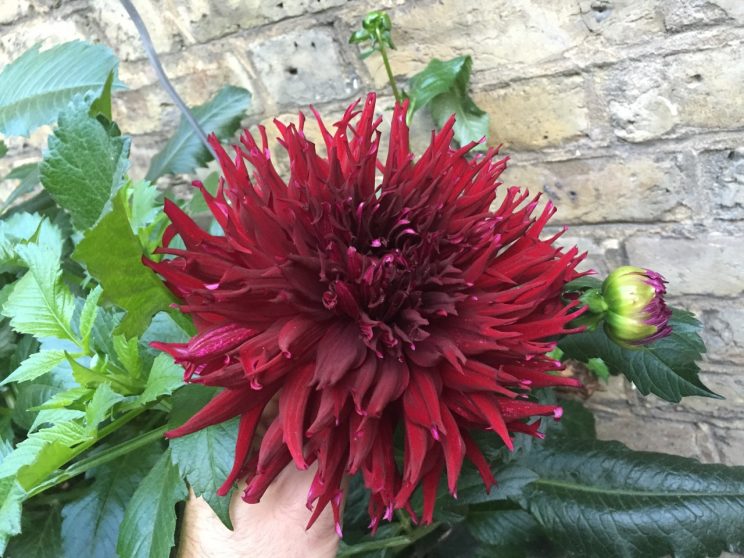
Dahlia ‘Purpinka’
Dahlia ‘Purpinka’ was a last minute additional purchase. Once Big Dreams, Small Spaces was confirmed, I decided we could squeeze in a few more Dahlias down the Dahlia walk by popping some miniatures into the window boxes. I was really pleased with Purpinka, I kept each in 2 litre plastic pots all summer and they flowered non-stop.
The colour is different to the other Dahlias I was growing, more pink than purple but darker. Overall, the effect was really good and all three were little troopers. Especially as they bore the brunt of the building work, shoved out the way and covered in dust.
Overwintering the Dahlias
And that was it. My first year of growing Dahlias. Exhausting, a bit rewarding, and lots learnt. Due to the very mild autumn and winter, they only experienced a tiny touch of frost in early December, which blackened a few of the leaves – I don’t know why, but I hadn’t actually expected the leaves to turn a bin bag black overnight like that.
As soon as that happened, I chopped them all down to form an almighty pile of Dahlia bits. I have to admit, with some of them really overgrowing their space, I was actually relieved.
The ‘Emory Paul’ and ‘Bishop of Canterbury’ in the bed I left where they are to try overwintering in situ. We have very, very mild winters here in recent years (only hitting 0C once or twice). I mounded the stumps up with compost. Fingers crossed the ‘Emory Paul’ comes back 🙂
The others are all now sitting in compost, vermiculite and some yellow sulphur dust. As above ground, the ‘Blackberry Ripple’ was growing like mad below ground too with by far the chunkiest tuber formed:
The others looked like this:
What a fantastically fun year in Dahlia world. For 2016 I’m taking things further by trialling a further 20 different cultivars, including pom pom types – stay tuned!
If you have your own advice, tips for varieties or thoughts on what I did wrong, please do comment below. Bye for now Dahlia fans!













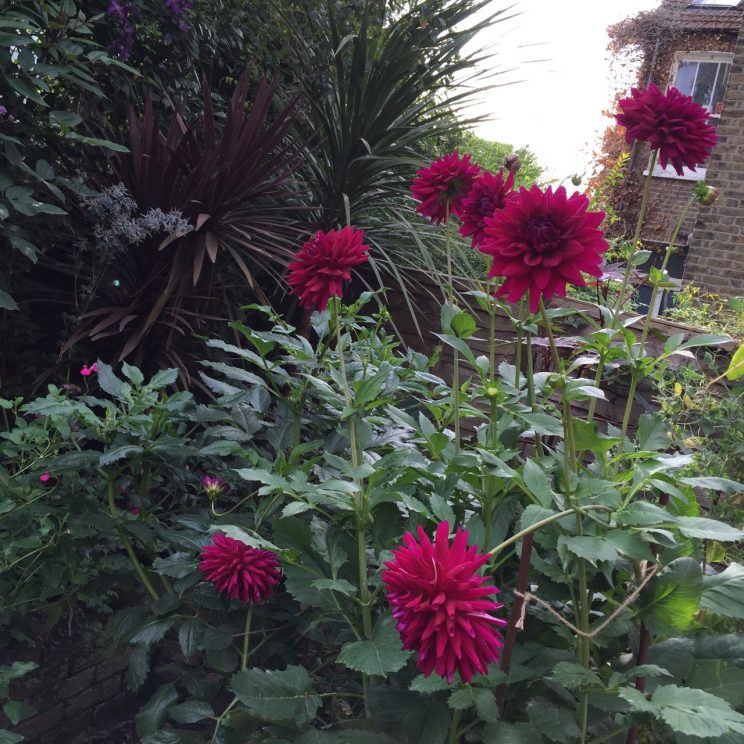


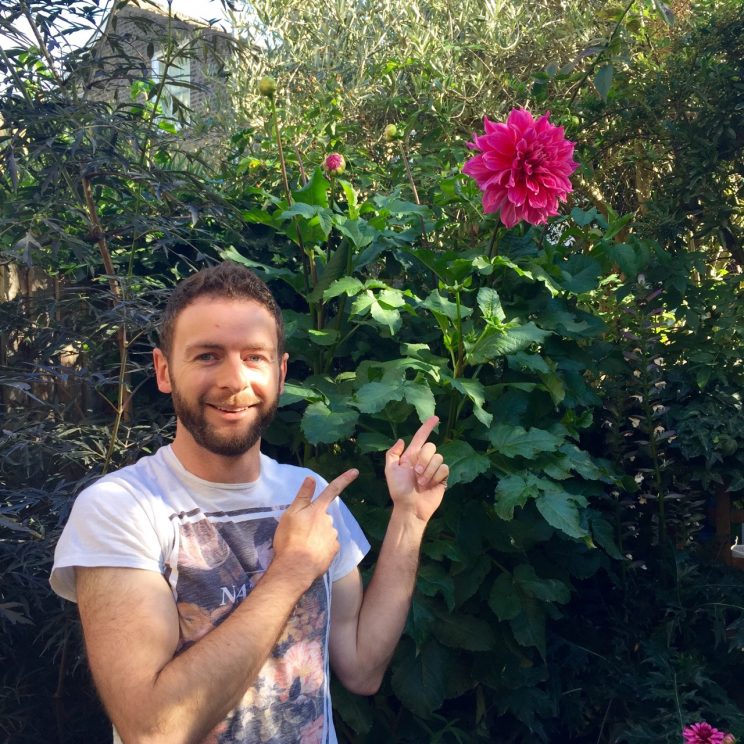


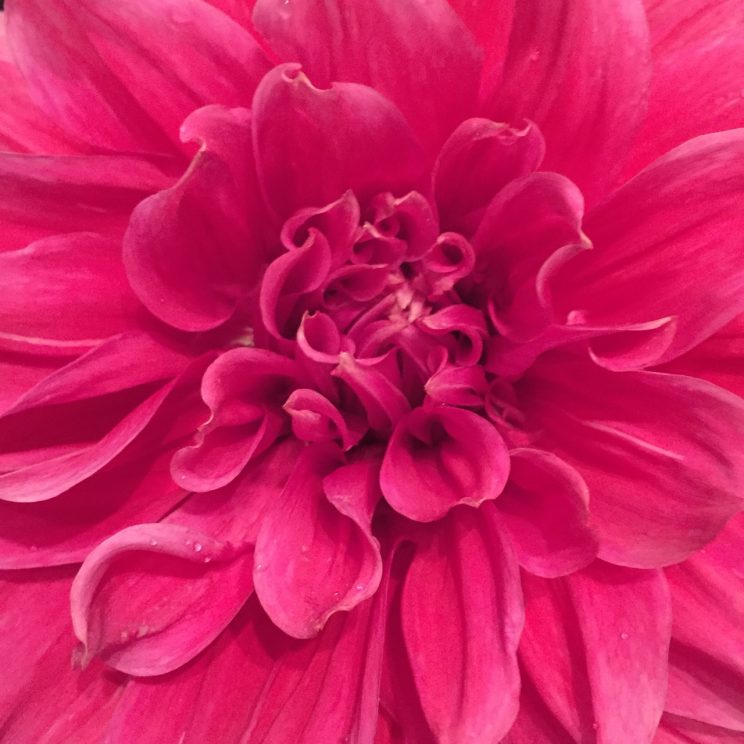


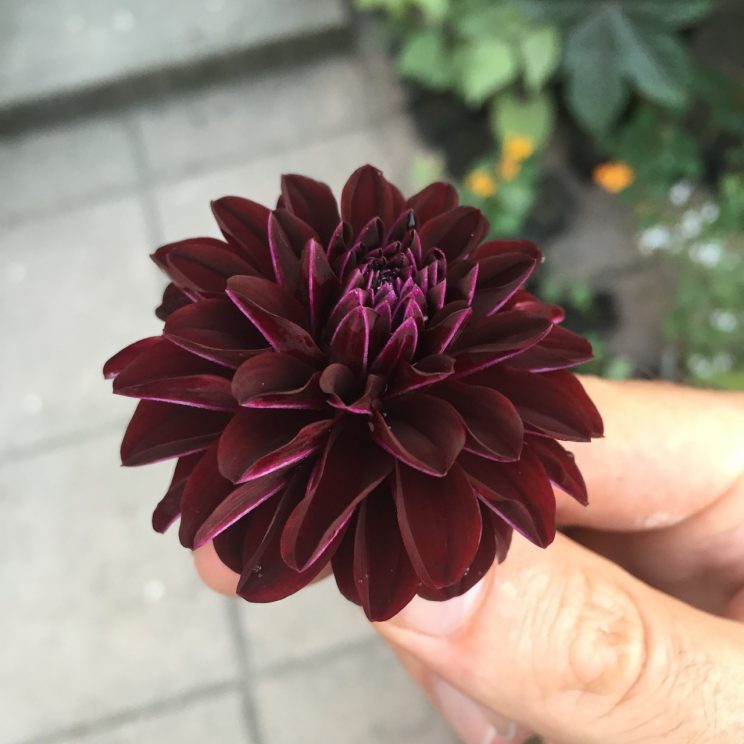












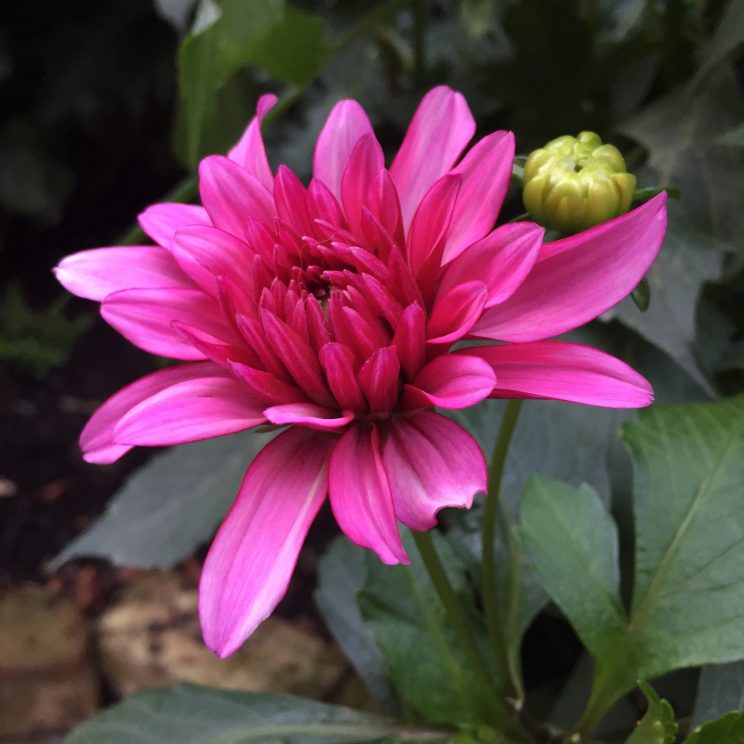

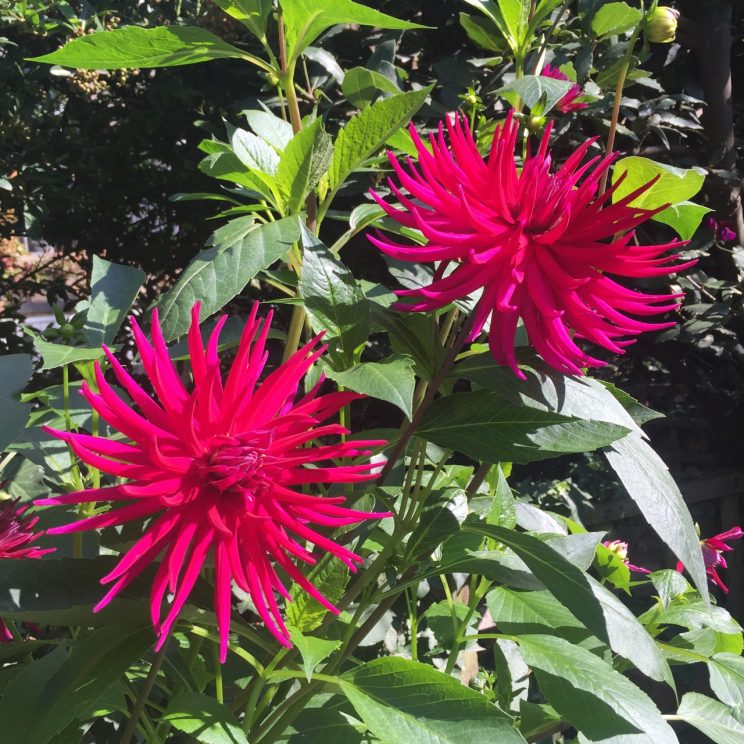







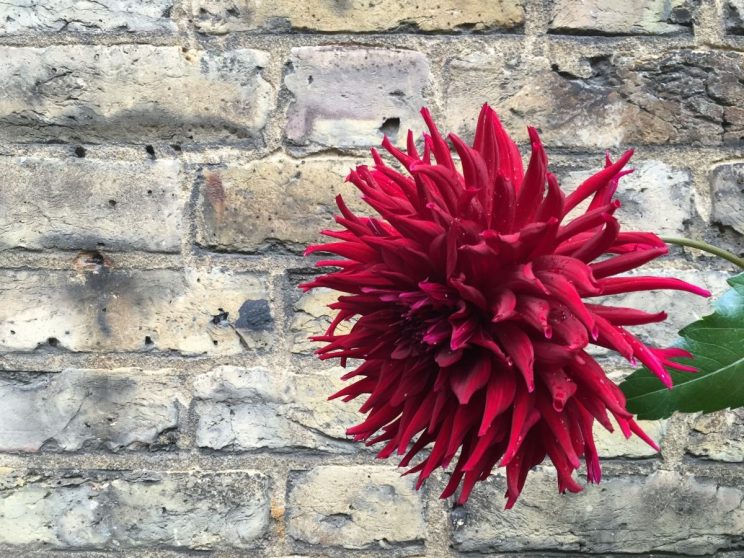



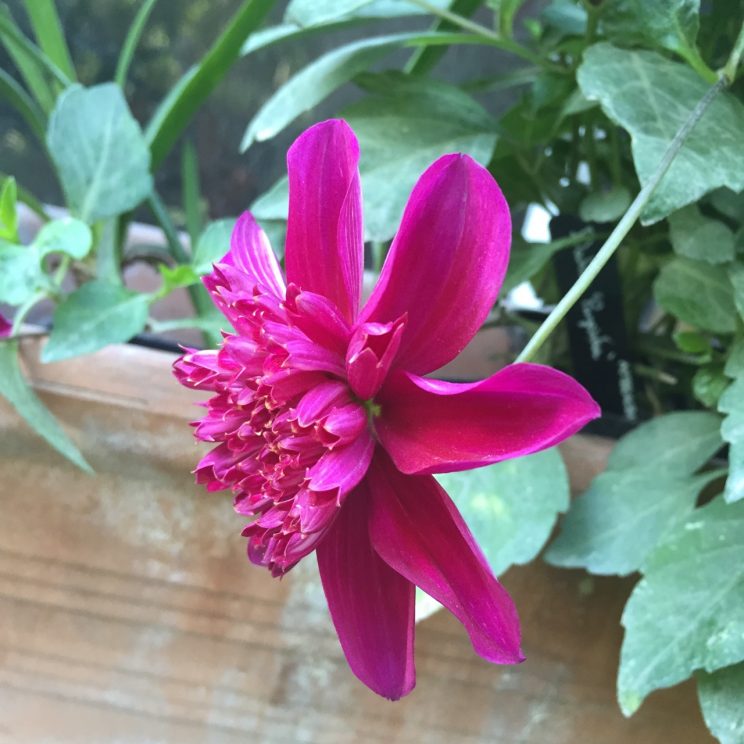
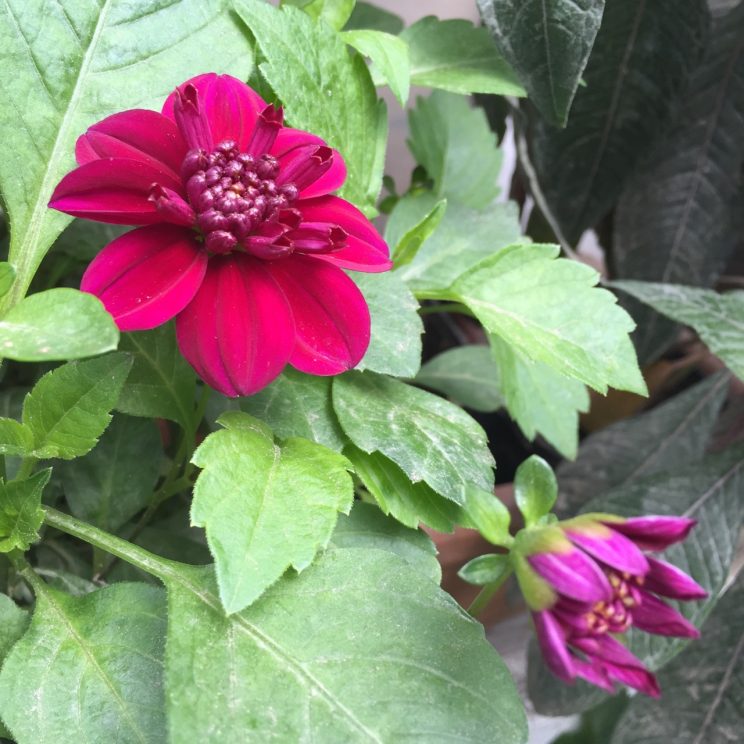









Great blog on dahlias. I’ve grown black jack for two years and they are fab.
Thanks Andrew, it’s a great one. I’m trialling lots of other Dahlias this year too. I think the magic formula is a low growing Dahlia with the big flowers. Yet to find one.
Great educational post. I’m new to dahlias and don’t have much space hence will pot them. Would it be best to feed them heavier in early August?
Thanks Jean. I mainly feed from about mid-June onwards. Switching to tomato feed when the flowers start opening to keep more coming. 🙂